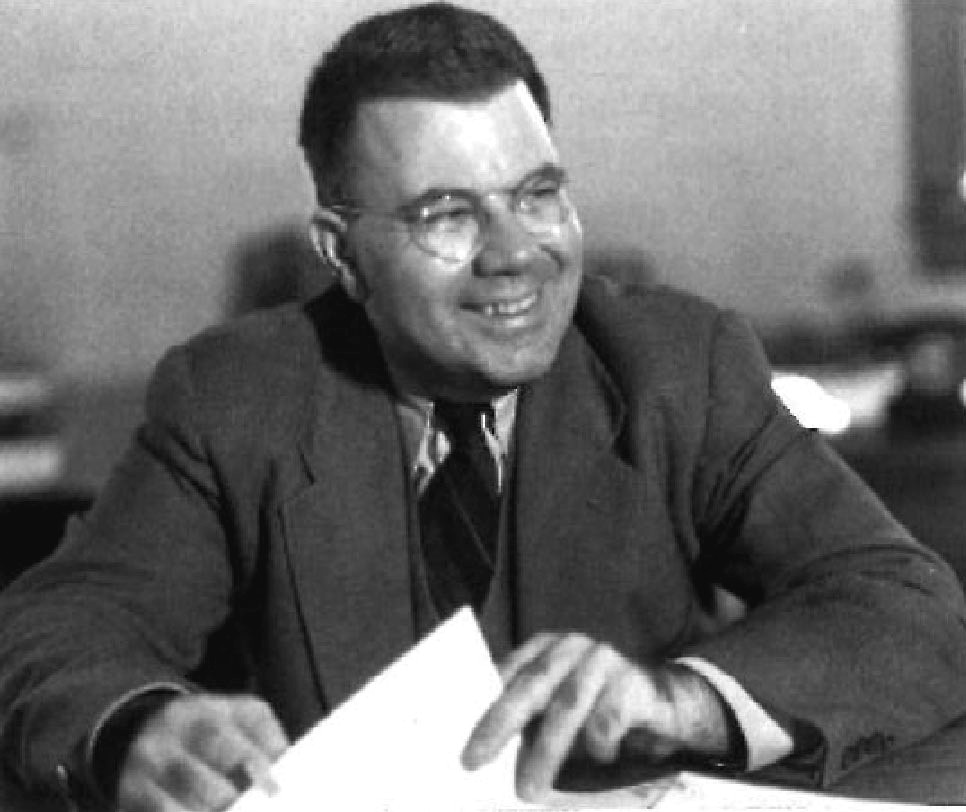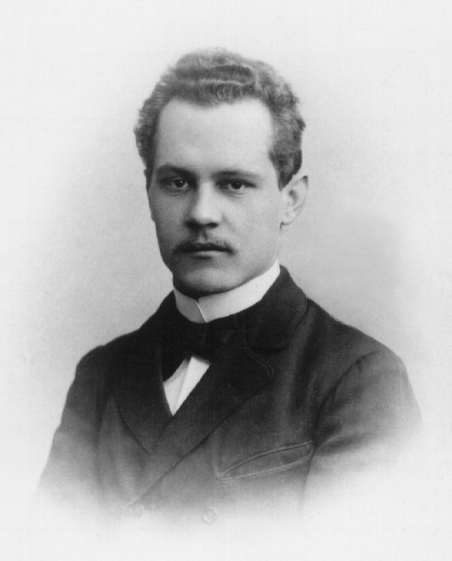|
Nimatron
The Nimatron was an electro-mechanical machine that played Nim. It was first exhibited in April–October 1940 by the Westinghouse Electric Corporation at the 1939-1940 New York World's Fair to entertain fair-goers. Conceived of some months prior by Edward Condon and built by Gerald L. Tawney and Willard A. Derr, the device was a non-programmable digital computer composed of electro-mechanical relays which could respond to players' choices in the game in a dozen different patterns. The machine, which weighed over a metric ton, displayed four lines of seven light bulbs both in front of the player and on four sides of an overhead cube. Players alternated turns with the machine in removing one or more lights from one of the rows until the lights were all extinguished. The calculations were purposely delayed to give the illusion that the machine was considering moves, and winners received a token. The reception of the machine during the fair was positive, with around 100,000 games o ... [...More Info...] [...Related Items...] OR: [Wikipedia] [Google] [Baidu] |
Edward Condon
Edward Uhler Condon (March 2, 1902 – March 26, 1974) was an American nuclear physicist, a pioneer in quantum mechanics, and a participant during World War II in the development of radar and, very briefly, of nuclear weapons as part of the Manhattan Project. The Franck–Condon principle and the Slater–Condon rules are co-named after him.''Edward Condon'' was elected as a member of the in 1944. He was the director of the |
Nimrod (computer)
The Nimrod, built in the United Kingdom by Ferranti for the 1951 Festival of Britain, was an early computer custom-built to play Nim, inspired by the earlier Nimatron. The twelve-by-nine-by-five-foot (3.7-by-2.7-by-1.5-meter) computer, designed by John Makepeace Bennett and built by engineer Raymond Stuart-Williams, allowed exhibition attendees to play a game of Nim against an artificial intelligence. The player pressed buttons on a raised panel corresponding with lights on the machine to select their moves, and the Nimrod moved afterward, with its calculations represented by more lights. The speed of the Nimrod's calculations could be reduced to allow the presenter to demonstrate exactly what the computer was doing, with more lights showing the state of the calculations. The Nimrod was intended to demonstrate Ferranti's computer design and programming skills rather than to entertain, though Festival attendees were more interested in playing the game than the logic behind it. Af ... [...More Info...] [...Related Items...] OR: [Wikipedia] [Google] [Baidu] |
Electro-mechanical Game
Electro-mechanical games (EM games) are types of arcade games that operate on a combination of some electronic circuitry and mechanical actions from the player to move items contained within the game's cabinet. Some of these were early light gun games using light-sensitive sensors on targets to register hits, while others were simulation games such as driving games, combat flight simulators and sports games. EM games were popular in amusement arcades from the late 1940s up until the 1970s, serving as alternatives to pinball machines, which had been stigmatized as games of chance during that period. EM games lost popularity in the 1970s, as arcade video games had emerged to replace them in addition to newer pinball machines designed as games of skill. Definition EM games typically combined mechanical engineering technology with various electrical components, such as motors, switches, resistors, solenoids, relays, bells, buzzers and electric lights. EM games lie somewhere in the ... [...More Info...] [...Related Items...] OR: [Wikipedia] [Google] [Baidu] |
1939 New York World's Fair
The 1939–40 New York World's Fair was a world's fair held at Flushing Meadows–Corona Park in Queens, New York, United States. It was the second-most expensive American world's fair of all time, exceeded only by St. Louis's Louisiana Purchase Exposition of 1904. Many countries around the world participated in it, and over 44 million people attended its exhibits in two seasons. It was the first exposition to be based on the future, with an opening slogan of "Dawn of a New Day", and it allowed all visitors to take a look at "the world of tomorrow". When World War II began four months into the 1939 World's Fair, many exhibits were affected, especially those on display in the pavilions of countries under Axis occupation. After the close of the fair in 1940, many exhibits were demolished or removed, though some buildings were retained for the 1964–1965 New York World's Fair, held at the same site. Planning In 1935, at the height of the Great Depression, a group of New Yo ... [...More Info...] [...Related Items...] OR: [Wikipedia] [Google] [Baidu] |
American Institute Of Physics
The American Institute of Physics (AIP) promotes science and the profession of physics, publishes physics journals, and produces publications for scientific and engineering societies. The AIP is made up of various member societies. Its corporate headquarters are at the American Center for Physics in College Park, Maryland, but the institute also has offices in Melville, New York, and Beijing. Historical overview The AIP was founded in 1931 as a response to lack of funding for the sciences during the Great Depression. /www.aip.org/aip/history "History of AIP" American Institute of Physics. July 2010. It formally incorporated in 1932 consisting of five original "member societies", and a total of four thousand members. A new set of member societies was added beginning in the mid-1960s. As soon as the AIP was established it began publishing scientific journals. [...More Info...] [...Related Items...] OR: [Wikipedia] [Google] [Baidu] |
Allied Social Science Associations
The Allied Social Science Associations (ASSA) is a group of academic and professional organizations that are officially recognized by the American Economic Association (AEA) and are related to the study of social sciences. As of 2007, there are fifty organizations that participate in the annual meetings of the ASSA, including: * Agricultural & Applied Economics Association (AAEA) * American Committee on Asian Economic Studies (ACAES) * American Economic Association (AEA) * American Finance Association (AFA) * African Finance and Economics Association (AFEA) * American Real Estate and Urban Economics Association (AREUEA) * American Society of Hispanic Economists (ASHE) * Association of Christian Economics (ACE) * Association for Comparative Economic Studies (ACES) * Association for Economic and Development Studies on Bangladesh (AEDSB) * Association of Environmental and Resource Economists (AERE) * Association for Evolutionary Economics (AFEE) * Association of Financial Economist ... [...More Info...] [...Related Items...] OR: [Wikipedia] [Google] [Baidu] |
American Statistical Association
The American Statistical Association (ASA) is the main professional organization for statisticians and related professionals in the United States. It was founded in Boston, Massachusetts on November 27, 1839, and is the second oldest continuously operating professional society in the US (only the Massachusetts Medical Society, founded in 1781, is older). The ASA services statisticians, quantitative scientists, and users of statistics across many academic areas and applications. The association publishes a variety of journals and sponsors several international conferences every year. Mission The organization's mission is to promote good application of statistical science, specifically to: * support excellence in statistical practice, research, journals, and meetings * work for the improvement of statistical education at all levels * promote the proper application of statistics * anticipate and meet member needs * use the discipline of statistics to enhance human welfare * seek opp ... [...More Info...] [...Related Items...] OR: [Wikipedia] [Google] [Baidu] |
Institute Of Mathematical Statistics
The Institute of Mathematical Statistics is an international professional and scholarly society devoted to the development, dissemination, and application of statistics and probability. The Institute currently has about 4,000 members in all parts of the world. Beginning in 2005, the institute started offering joint membership with the Bernoulli Society for Mathematical Statistics and Probability as well as with the International Statistical Institute. The Institute was founded in 1935 with Harry C. Carver and Henry L. Rietz as its two most important supporters. The institute publishes a variety of journals, and holds several international conference every year. Publications The Institute publishes five journals: *''Annals of Statistics'' *'' Annals of Applied Statistics'' *''Annals of Probability'' *''Annals of Applied Probability'' *'' Statistical Science'' In addition, it co-sponsors: * The ''Current Index to Statistics'' * ''Electronic Communications in Probability'' * ''Ele ... [...More Info...] [...Related Items...] OR: [Wikipedia] [Google] [Baidu] |
The American Mathematical Monthly
''The American Mathematical Monthly'' is a mathematical journal founded by Benjamin Finkel in 1894. It is published ten times each year by Taylor & Francis for the Mathematical Association of America. The ''American Mathematical Monthly'' is an expository journal intended for a wide audience of mathematicians, from undergraduate students to research professionals. Articles are chosen on the basis of their broad interest and reviewed and edited for quality of exposition as well as content. In this the ''American Mathematical Monthly'' fulfills a different role from that of typical mathematical research journals. The ''American Mathematical Monthly'' is the most widely read mathematics journal in the world according to records on JSTOR. Tables of contents with article abstracts from 1997–2010 are availablonline The MAA gives the Lester R. Ford Awards annually to "authors of articles of expository excellence" published in the ''American Mathematical Monthly''. Editors *2022– ... [...More Info...] [...Related Items...] OR: [Wikipedia] [Google] [Baidu] |
Carnegie Mellon University
Carnegie Mellon University (CMU) is a private research university in Pittsburgh, Pennsylvania. One of its predecessors was established in 1900 by Andrew Carnegie as the Carnegie Technical Schools; it became the Carnegie Institute of Technology in 1912 and began granting four-year degrees in the same year. In 1967, the Carnegie Institute of Technology merged with the Mellon Institute of Industrial Research, founded in 1913 by Andrew Mellon and Richard B. Mellon and formerly a part of the University of Pittsburgh. Carnegie Mellon University has operated as a single institution since the merger. The university consists of seven colleges and independent schools: The College of Engineering, College of Fine Arts, Dietrich College of Humanities and Social Sciences, Mellon College of Science, Tepper School of Business, Heinz College of Information Systems and Public Policy, and the School of Computer Science. The university has its main campus located 5 miles (8 km) from Downto ... [...More Info...] [...Related Items...] OR: [Wikipedia] [Google] [Baidu] |


.jpg)
.jpg)
